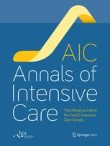2022 Citation Impact
8.1 - 2-year Impact Factor
6.8 - 5-year Impact Factor
2.326 - SNIP (Source Normalized Impact per Paper)
2.616 - SJR (SCImago Journal Rank)
2023 Speed
7 days submission to first editorial decision for all manuscripts (Median)
91 days submission to accept (Median)
2023 Usage
1,737,465 downloads
6,851 Altmetric mentions



